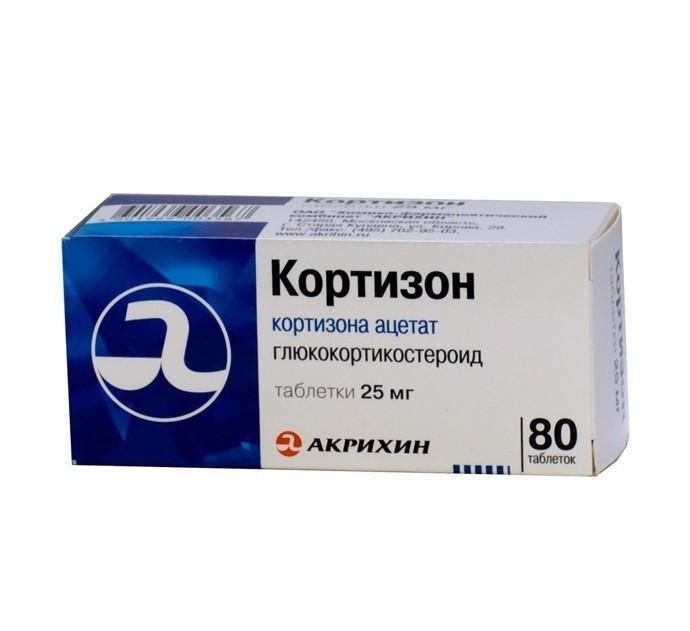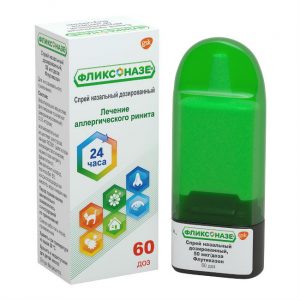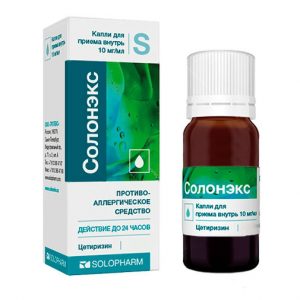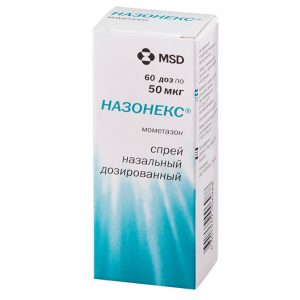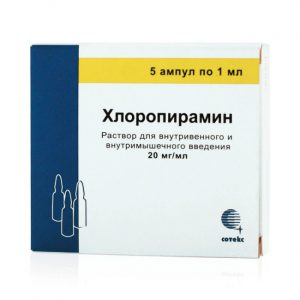Description
Release form
Tablets.
packaging
80 pcs
Pharmacological action
Cortisone is a synthetic glucocorticosteroid. It has anti-inflammatory, anti-allergic and immunosuppressive effects, increases the sensitivity of beta-adrenergic receptors to endogenous catecholamines.
Interacts with specific cytoplasmic receptors (there are receptors for glucocorticosteroids (GCS) in all tissues, especially there are many in the liver) with the formation of a complex that induces the formation of proteins (including enzymes that regulate vital processes in cells).
Indications
Chronic adrenal insufficiency:
Addison’s disease.
Hypocorticism after bilateral adrenalectomy.
Hypopituitarism with secondary hypocorticism, etc.
Congenital dysfunction of the adrenal cortex – in combination with mineralocorticoids.
Contraindications
For short-term use for life, the only contraindication is hypersensitivity to cortisone acetate or the components of the drug.
In children, during the period of growth, corticosteroids should be used only according to absolute indications and under especially careful supervision of a physician.
Precautions:
Diseases of the gastrointestinal tract: Peptic ulcer of the stomach and duodenum.
Esophagitis.
Gastritis.
Acute or latent peptic ulcer.
Recently created intestinal anastomosis.
Nonspecific ulcerative colitis with the threat of perforation or abscess formation.
Diverticulitis.
Parasitic and infectious diseases of a viral, fungal or bacterial nature (ongoing or recent, including recent contact with the patient): Cold sores.
Herpes zoster (viraemic phase).
Chicken pox.
Measles.
Amoebiasis.
Stroigyloidosis.
Systemic mycosis.
Active and latent tuberculosis.
Use in severe infectious diseases is permissible only against the background of specific therapy.
Pre- and post-vaccination period (8 weeks before and 2 weeks after vaccination).
Lymphadenitis after BCG vaccination.
Immunodeficiency conditions (including AIDS or HIV infection).
Diseases of the cardiovascular system: Recently suffered myocardial infarction (in patients with acute and subacute myocardial infarction, the spread of the focus of necrosis is possible).
Slows the formation of scar tissue.
Rupture of the heart muscle.
Severe chronic heart failure.
Arterial hypertension.
Hyperlipidemia.
Endocrine diseases: Diabetes mellitus (including impaired carbohydrate tolerance).
Thyrotoxicosis.
Hypothyroidism.
Itsenko-Cushing’s disease.
Obesity (III-IV century).
Severe chronic liver failure.
Severe chronic renal failure.
Nephrourolithiasis.
Hypoalbuminemia and conditions predisposing to its occurrence.
Systemic osteoporosis.
myasthenia gravis.
Acute psychosis.
Poliomyelitis (except for the form of bulbar encephalitis).
Open and closed angle glaucoma.
Pregnancy.
Special instructions
During treatment with Cortisone (especially long-term), it is necessary to observe an ophthalmologist, monitor blood pressure, and the state of water-electrolyte balance, as well as pictures of peripheral blood and blood glucose levels.
In order to reduce side effects, antacids can be prescribed, as well as increase the intake of K + in the body (diet, potassium preparations). Food should be rich in protein, vitamins, with a limited content of fats, carbohydrates and salt.
The effect of the drug is enhanced in patients with hypothyroidism and cirrhosis.
The drug may enhance existing emotional instability or psychotic disturbances. When indicating a history of psychosis, high doses of Cortisone are prescribed under the strict supervision of a physician.
In stressful situations during maintenance treatment (for example, surgery, trauma or infectious diseases), the dose should be adjusted in connection with an increased need for glucocorticosteroids.
In case of sudden cancellation, especially in the case of the previous use of high doses, withdrawal syndrome (anorexia, nausea, lethargy, generalized musculoskeletal pain, general weakness), as well as an exacerbation of the disease, for which Cortisone was prescribed, is possible.
During treatment with Cortisone, vaccination should not be carried out due to a decrease in its effectiveness (immune response).
Prescribing for intercurrent infections, septic conditions and tuberculosis, it is necessary to simultaneously carry out antibiotic treatment with bactericidal action.
In children during prolonged treatment with Cortisone, careful monitoring of the dynamics of growth and development is necessary. Children who were in contact with measles or chickenpox during the treatment period are prescribed specific immunoglobulins prophylactically.
Due to an insufficiently expressed mineralocorticoid effect for replacement therapy in adrenal insufficiency, Cortisone is used in combination with mineralocorticoids.
In patients with diabetes mellitus, blood glucose should be monitored and, if necessary, corrected.
X-ray control of the osteoarticular system (images of the spine, hand) is indicated.
Cortisone in patients with latent infectious diseases of the kidneys and urinary tract can cause leukocyturia, which may be of diagnostic value.
Cortisone increases the metabolites of 11- and 17-hydroxyketocorticosteroids.
Composition
Active ingredient: 25 mg cortisone acetate.
Excipients: sugar, potato starch, stearic acid.
Dosage and Administration
Inside.
In chronic adrenal insufficiency:
The usual average maintenance dose is 25-50 mg per day. The daily dose of the drug is prescribed in 2 doses, reproducing the daily rhythm of cortisone secretion -2/3 of the daily dose in the morning (at 6-8 hours) and 1/3 of the daily dose in the evening (at 17-18 hours). With the threat of stress, the daily dose is increased by 2-3 times and prescribed in 3-4 doses (after 6-8 hours).
With congenital dysfunction of the adrenal cortex
Apply at a dose of 25 mg per day in combination with other glucocorticosteroid drugs (prednisone, dexamethasone).
Maximum doses for adults: single -150 mg, daily – 300 mg.
Cortisone is prescribed in lower doses for children, depending on age.
Maximum doses for children:
Up to 5 years: single – 25 mg, daily – 75 mg.
From 5 to 10 years: single – 50 mg, daily -150 mg.
Over 10 years: single – 75 mg, daily – 225 mg.
If you need to replace Cortisone with other drugs with glucocorticosteroid activity, remember that 25 mg of cortisone is equivalent in action to 20 mg of hydrocortisone 5 mg of prednisone or prednisone 4 mg of methylprednisolone or triamcinolone 0.75 mg dexamethasone.
Side effects
The frequency of development and severity of side effects depends on the duration of use, the size of the dose used and the ability to adhere to the circadian rhythm of cortisone administration.
Endocrine system:
Decreased glucose tolerance, steroid diabetes mellitus or manifestation of latent diabetes mellitus, inhibition of adrenal function, Itsenko-Cushing’s syndrome (moon-shaped face, pituitary-type obesity, hirsutism, increased blood pressure, dysmenorrhea, amenorrhea, muscle weakness, striae), delayed sexual development in children.
Digestive system:
Nausea, vomiting, pancreatitis, steroid ulcer of the stomach and duodenum, erosive esophagitis, bleeding and perforation of the gastrointestinal tract, increased or decreased appetite, digestion, flatulence, hiccups. In rare cases, an increase in the activity of hepatic transaminases and alkaline phosphatase.
From the cardiovascular system:
Arrhythmias, bradycardia (up to cardiac arrest), development (in predisposed patients) or increased severity of heart failure, ECG changes characteristic of hypokalemia, increased blood pressure, hypercoagulation, thrombosis. In patients with acute and subacute myocardial infarction – the spread of the focus of necrosis, slowing the formation of scar tissue, which can lead to rupture of the heart muscle.
From the nervous system:
Delirium, disorientation, euphoria, hallucinations, manic-depressive psychosis, depression, paranoia, increased intracranial pressure, nervousness or anxiety, insomnia, dizziness, vertigo, cerebellar pseudotumor, headache,
From the sensory organs:
Posterior subcapsular cataract, increased intraocular pressure with possible damage to the optic nerve, a tendency to develop secondary bacterial, fungal or viral infections of the eyes, trophic changes in the cornea, exophthalmos.
Metabolism:
Increased calcium excretion, hypocalcemia, increased body weight, negative nitrogen balance (increased protein breakdown), increased sweating.
Caused by mineralocorticoid activity – fluid and sodium retention (peripheral edema), hypernatremia, hypokalemia syndrome (hypokalemia, arrhythmia, myalgia or muscle spasm, unusual weakness and fatigue).
From the musculoskeletal system:
Slowing growth and processes of ossification in children (premature closure of the pineal gland), osteoporosis (very rarely pathological bone fractures, aseptic necrosis of the head of the humerus and femur), rupture of tendons of the muscles, steroid myopathy, reduction muscle mass (atrophy).
From the skin and mucous membranes:
Slow healing of wounds, petechiae, ecchymosis, thinning of the skin, hyper- or hypopigmentation, acne, striae, tendency to develop pyoderma and candidiasis.
Allergic reactions:
Skin rash, itching, anaphylactic shock.
Other:
Development or exacerbation of infections (the combined immunosuppressants and vaccination contribute to this side effect), leukocyturia, withdrawal syndrome.
Drug interaction
Simultaneous administration of cortisone with:
Inductors of hepatic microsomal enzymes (phenobarbital, rifampicin, phenytoin, theophylline, ephedrine) leads to a decrease in its concentration.
Diuretics (especially thiazide and carbonic anhydrase inhibitors) and amphotericin B can lead to increased excretion of K + from the body, with sodium-containing drugs – edema and increased blood pressure.
Amphotericin B increases the risk of heart failure.
Cardiac glycosides deteriorate their tolerance and increase the likelihood of developing ventricular extrasystole (due to hypokalemia).
Indirect anticoagulants weaken (less commonly) their effect (dose adjustment is required).
Anticoagulants and thrombolytics increase the risk of bleeding from ulcers in the gastrointestinal tract.
Ethanol and non-steroidal anti-inflammatory drugs (NSAIDs) increase the risk of ulcerative ulcerative lesions in the gastrointestinal tract and the development of bleeding (in combination with NSAIDs in the treatment of arthritis, it is possible to reduce the dose of glucocorticosteroids due to the summation of the therapeutic effect).
Paracetamol increases the risk of hepatotoxicity (induction of liver enzymes and the formation of a toxic metabolite of paracetamol).
Acetylsalicylic acid accelerates its excretion and reduces the concentration in the blood (when Cortisone is canceled, the level of salicylates in the blood increases and the risk of side effects).
insulin and oral hypoglycemic drugs, antihypertensive agents decreases their effectiveness.
Vitamin D decreases its effect on the absorption of Ca 2+ in the intestine.
Somatotropic hormone reduces the effectiveness of the latter, and with praziquantel – its concentration.
M-anticholinergics (including antihistamines and tricyclic antidepressants) and nitrates helps increase intraocular pressure.
Isoniazid and Mexelitin increase their metabolism (especially in slow acetylators), which leads to a decrease in their plasma concentrations.
Carbonic anhydrase inhibitors and loop diuretics may increase the risk of osteoporosis.
Indomethacin, displacing cortisone from its association with albumin, increases the risk of side effects.
ACTH enhances cortisone.
Ergocalciferol and parathyroid hormone inhibit the development of osteopathy caused by Cortisone.
Cyclosporine and ketoconazole, slowing down the metabolism of Cortisone, can in some cases increase its toxicity.
The simultaneous administration of androgens and steroidal anabolic drugs with Cortisone contributes to the development of peripheral edema and hirsutism, the appearance of acne.
Estrogens and oral estrogen-containing contraceptives reduce the clearance of Cortisone, which may be accompanied by an increase in the severity of its action.
Mitotan and other inhibitors of adrenal cortex function may necessitate increased doses of cortisone.
When used simultaneously with live antiviral vaccines and against other types of immunization, it increases the risk of virus activation and infection.
Antipsychotics (antipsychotics) and azathioprine increase the risk of cataracts when given Cortisone.
Concomitant administration of antacids reduces the absorption of cortisone.
With simultaneous use with antithyroid drugs, it decreases, and with thyroid hormones, the clearance of Cortisone increases.
Overdose of
Symptoms: increased side effects.
Treatment: symptomatic.
Storage conditions
Do not store above 25 ° C.
Expiration
5 years.
Terms leave through pharmacies
In retseptu
lekarstvennaja form
tablets
